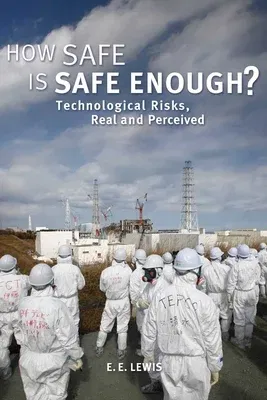Every time an airplane crashes, a gas line explodes, a bridge collapses,
or a contaminant escapes the public questions whether the benefits that
technology brings are worth its risks. Written in laymen's language, How
Safe Is Safe Enough? explores the realities of the risks that technology
presents and the public's perceptions of them. E. E. Lewis examines how
these perceptions are reconciled with economic interests and risk
assessors' analyses in messy and often contentious political processes
that determine acceptable levels of safety--levels that often depend
more on the perceived nature of the risks than on the number of deaths
or injuries that they cause.
The author explains why things fail and why design necessitates
tradeoffs between performance, cost, and safety. He details methods for
identifying and eliminating design flaws and illustrates the
consequences when they fail. Lewis examines faulty machine interfaces
that cause disastrous human errors and highlights how cost cutting and
maintenance neglect have led to catastrophic consequence.
How Safe Is Safe Enough? explores how society determines adequate
levels of safety, outlining the announcement and enforcement of safety
regulations and addressing controversies surrounding cost-benefit
analysis. The author argues that large regulatory effects stem from the
public's wide-ranging perceptions of three classes of accidents: the
many everyday accidents causing one or two deaths at a time, rare
disasters causing large loss of life, and toxic releases leading to
uncertain future health risks. The nuclear disaster at Fukushima
culminates the discussion, exemplifying the dichotomies faced in
reconciling professional risk assessors' statistical approaches with the
citizenry's fears and perceptions.
For better or worse, technology permeates our lives, and much of it we
don't understand--how it works and what the chances are that it will
fail dangerously. Such interest and concerns are at the heart of this
authoritative, provocative analysis.

